Blood-derived APLP1+ extracellular vesicles are potential biomarkers for the early diagnosis of brain diseases
- PMID: 39742488
- PMCID: PMC11691634
- DOI: 10.1126/sciadv.ado6894
Blood-derived APLP1+ extracellular vesicles are potential biomarkers for the early diagnosis of brain diseases
Abstract
The early detection of neurodegenerative diseases necessitates the identification of specific brain-derived biomolecules in peripheral blood. In this context, our investigation delineates the role of amyloid precursor-like protein 1 (APLP1)-a protein predominantly localized in oligodendrocytes and neurons-as a previously unidentified biomarker in extracellular vesicles (EVs). Through rigorous analysis, APLP1+ EVs from human sera were unequivocally determined to be of cerebral origin. This assertion was corroborated by distinctive small RNA expression patterns of APLP1+ EVs. The miRNAs' putative targets within these EVs manifested pronounced expression in the brain, fortifying their neurospecific provenance. We subjected our findings to stringent validation using Thy-1 GFP M line mice, transgenic models wherein GFP expression is confined to hippocampal neurons. An amalgamation of these results with an exhaustive data analysis accentuates the potential of APLP1+ EVs as cerebrally originated biomarkers. Synthesizing our findings, APLP1+ EVs are postulated not merely as diagnostic markers but as seminal entities shaping the future trajectory of neurodegenerative disease diagnostics.
Figures
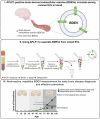
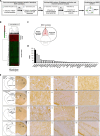
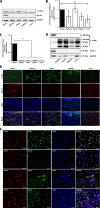
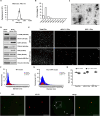
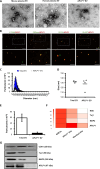
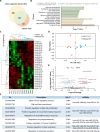

Similar articles
-
Circulating MicroRNAs in Extracellular Vesicles as Potential Biomarkers of Alcohol-Induced Neuroinflammation in Adolescence: Gender Differences.Int J Mol Sci. 2020 Sep 14;21(18):6730. doi: 10.3390/ijms21186730. Int J Mol Sci. 2020. PMID: 32937997 Free PMC article.
-
Brain-derived extracellular vesicles: Potential diagnostic biomarkers for central nervous system diseases.Psychiatry Clin Neurosci. 2024 Feb;78(2):83-96. doi: 10.1111/pcn.13610. Epub 2023 Nov 14. Psychiatry Clin Neurosci. 2024. PMID: 37877617 Review.
-
An optimized method for enrichment of whole brain-derived extracellular vesicles reveals insight into neurodegenerative processes in a mouse model of Alzheimer's disease.J Neurosci Methods. 2018 Sep 1;307:210-220. doi: 10.1016/j.jneumeth.2018.05.022. Epub 2018 Jun 9. J Neurosci Methods. 2018. PMID: 29894726 Free PMC article.
-
Assessment of technical and clinical utility of a bead-based flow cytometry platform for multiparametric phenotyping of CNS-derived extracellular vesicles.Cell Commun Signal. 2023 Oct 6;21(1):276. doi: 10.1186/s12964-023-01308-9. Cell Commun Signal. 2023. PMID: 37803478 Free PMC article.
-
Extracellular vesicles: their challenges and benefits as potential biomarkers for musculoskeletal disorders.J Int Med Res. 2025 Feb;53(2):3000605251317476. doi: 10.1177/03000605251317476. J Int Med Res. 2025. PMID: 39973226 Free PMC article. Review.
Cited by
-
Barriers in the Nervous System: Challenges and Opportunities for Novel Biomarkers in Amyotrophic Lateral Sclerosis.Cells. 2025 Jun 5;14(11):848. doi: 10.3390/cells14110848. Cells. 2025. PMID: 40498024 Free PMC article. Review.
References
MeSH terms
Substances
LinkOut - more resources
Full Text Sources
Molecular Biology Databases
Research Materials
Miscellaneous

